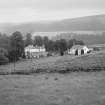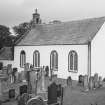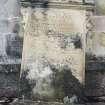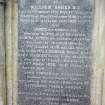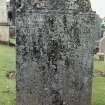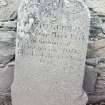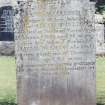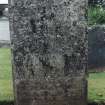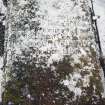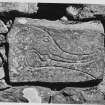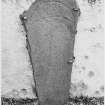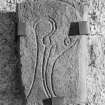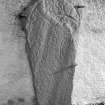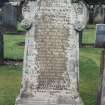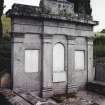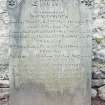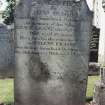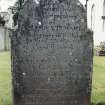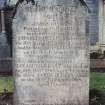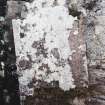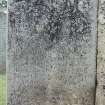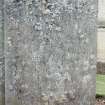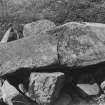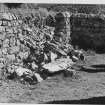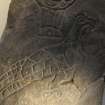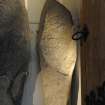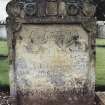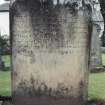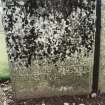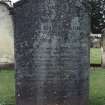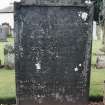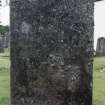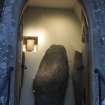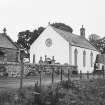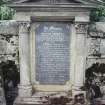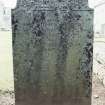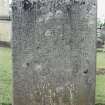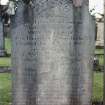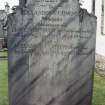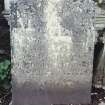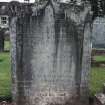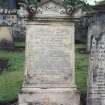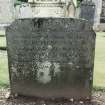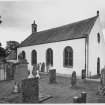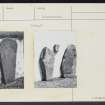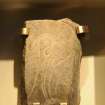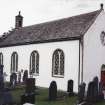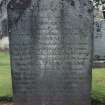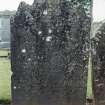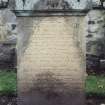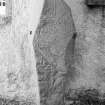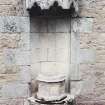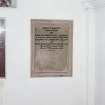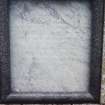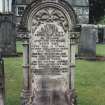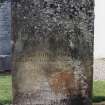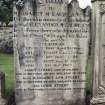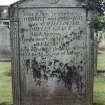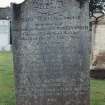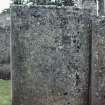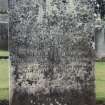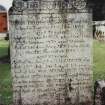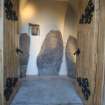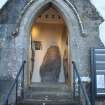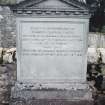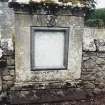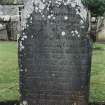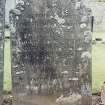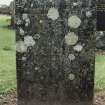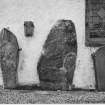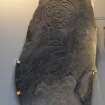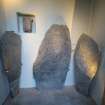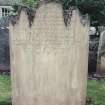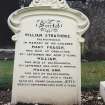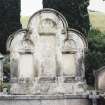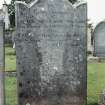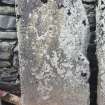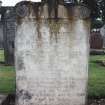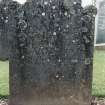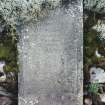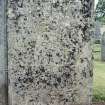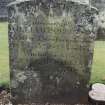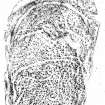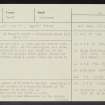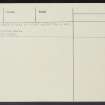Inveravon, Old Parish Church And Churchyard
Burial Ground (18th Century), Church (19th Century) (1808)
Site Name Inveravon, Old Parish Church And Churchyard
Classification Burial Ground (18th Century), Church (19th Century) (1808)
Alternative Name(s) Church Of Inveravon; Saint Peter's Church; Inveraven, Pictish Symbol Stones
Canmore ID 16010
Site Number NJ13NE 7
NGR NJ 18287 37599
Datum OSGB36 - NGR
Permalink http://canmore.org.uk/site/16010
- Council Moray
- Parish Inveravon
- Former Region Grampian
- Former District Moray
- Former County Banffshire
It is believed that a church has stood at this site since the twelfth century. The existing church was constructed in 1808, with some fragments of a sixteenth-century building incorporated into its fabric.
The parish church is a simple rectangular building, harled with a slated roof and dressings of smooth blocks of granite and sandstone. There are three pointed windows on the north, where the main entrance is situated, a circular rose window above another entrance on the east gable and four round-headed windows on the south elevation. A single-storeyed minister's room is attached to the west gable.
The burial ground, which lies on three sides of the church is surrounded by a rubble wall, and entered through cast-iron gates. Some of the gravestones are made of local slate, and bear finely detailed inscriptions.
Four Pictish symbol-stones are attached to the exterior of the south wall. Three were reputedly found when the old church was demolished, having been used as foundation stones. The fourth stone was discovered in the churchyard.
Text prepared by RCAHMS as part of the Accessing Scotland's Past project
Photographic Survey (1954)
Photographs of buildings in Inveravon, Banffshire, by the Scottish National Buildings Record in 1954.
Field Visit (12 July 1967)
No trace exists of St Peter's Church. According to Dunnet, the first mention of a Catholic Church of 'St Peter of Strathowen' is in the 12th century (H Dunnet 1919).
The present church was built c. 1790.
The four symbol stones discovered in the church-yard, which is still in use, now stand against the S wall of the church.
Surveyed at 1:2500.
Visited by OS (N K B) 12 July 1967.
H Dunnet 1919.
Desk Based Assessment (1967)
NJ13NE 7.00 18287 37599
(NJ 1828 3757) St Peter's Church & Sculptured Stone (NR) (Site of)
OS 6" map, Banffshire, 2nd ed., (1905).
Mausoleum [NAT]
Symbol Stones [NR]
St Peter's Church [NR] (Site of) [NAT
OS 1:10,000 map, 1976.
NJ13NE 7.01 NJ 1828 3767 Pictish symbol stone (Inveravon no. 1)
NJ13NE 7.02 NJ 1828 3757 Pictish symbol stone (Inveravon no. 2)
NJ13NE 7.03 NJ 1828 3757 Pictish symbol stone (Inveravon no. 3)
NJ13NE 7.04 NJ 1828 3737 Pictish symbol stone (Inveravon no. 4)
NJ13NE 7.05 NJ 18311 37598 Mausoleum
NJ13NE 7.06 NJ 18295 37577 Burial ground
The church was built in 1586 and the ruined aisle was still extant in 1794. In the churchyard were three symbol stones believed to have been taken out of the foundations of the old church. These symbol stones are scheduled. A further Class I symbol stone was found in 1964.
OSA 1794; J R Allen and J Anderson 1903; A Small 1964.
Information from OS.
Reference (1994)
All four stones are mounted on the outside of the S wall of the present church. Stones 1-3 as noted by Allen and Anderson. A fourth stone was discovered in 1964 and is a large undressed slab of metamorphosed sandstone bearing an incised crescent and V-rod and a 'beast'.
RCAHMS 1994.
Reference (1997)
Four class I symbol stones.
Inveraven 1 : Mirror-case above an eagle with a mirror and comb on the right
Inveraven 2 : Crescent and V-rod above a triple disc and bar and mirror-and-comb
Inveraven 3 : Elephant (head and foreparts only)
Inveraven 4 : Crescent and V-rod above an elephant
A Mack 1997.
Conservation (December 2011)
Conservation and Relocation
The four Inveravon Class I Incised Pictish Symbol stones, dating from perhaps the 6th-7th Century AD, were set against the south wall of Inveravon Church. The Church is a Category B Listed Building dating from 1806 but sitting on and near the remains of earlier Churches: the earliest existing record of St Peters Church Inveravon dating back to 1108. Found below and adjacent to the present Church, they include representations of the ‘Pictish Beast’, the most iconic and enigmatic of all the Pictish Symbols. The stones are Statutory Monuments. There were problems with the stones being exposed to the freeze thaw cycle in this exposed Highland location. The mounting of the stones was also problematic causing damp ingress to the Church itself through the South Wall.
After consultations with Historic Scotland, Tomintoul Glenlivit & Inveravon Church developed proposals to conserve the Pictish Stones and relocate them in the 1876 North Porch (an early work by the Architect Alexander Marshall Mackenzie).











































































































